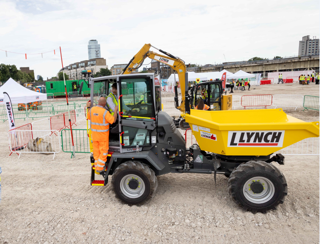Transport for London (TfL) is urging fleet managers to “not get caught out” by the introduction of the Direct Vision Standard (DVS), in March 2021.
The start of DVS enforcement was planned for the end of this month (October), but was pushed back to March 1 to allow for the industry to restart when lockdown measures were introduced due to the Coronavirus pandemic, says TfL.
The Direct Vision Standard is a way of measuring a driver’s direct view through the windows of an HGV cab, vehicles are given a star rating based on this view from 0, which is poor, to five, which is excellent.
The star rating indicates the level of risk to vulnerable road users near the vehicle.
Fleet managers will need at least a one-star rating to meet the new requirement. By 2024, a minimum of three stars will be required.
Alina Tuerk, strategy and planning manager at Transport for London (TfL), said: "It's important to make sure that those procuring fleets and those operating fleets now are aware of the changes that are happening and regulation in London, specifically.
“We really want to make sure that no operators find out about the enforcement at the last minute and don’t leave it to the last minute to apply and make sure they’re getting ready and don't get caught out.”
Less than one in four fleet managers said they are ready for the Direct Vision Standard (DVS) and HGV Permit Scheme, a survey by CameraMatics suggests.
This year, Tuerk will be speaking at Virtual Fleet and Mobility Live on day two of the event (November 18), in it’s new virtual, free-to-attend format, for 2020.
Tuerk’s session will be on, ‘How the Direct Vision Standard will affect your fleet’ and will look at the standards which all fleets will need to adhere to by March 1, 2021, for vehicles of 12 tonnes and heavier operating in London.
In the session, Tuerk will breakdown what the scheme means for fleets and what operators need to do to ensure they are ready for the enforcement.
The session will also focus on the objectives of the scheme - reducing road danger as part of TfL’s Vision Zero commitment – to eliminate all road deaths and serious injury from the network by 2041.
“Virtual Fleet and Mobility Live is a good space to bring together the latest developments and changes from across the country,” said Tuerk.
“The event allows me to look at trends in other areas and identify how we’re picking those up in London.”
Tuerk says she wants to clear up any confusion that may surround the standard in her session at this year's Virtual Fleet & Mobility Live.
She said: “There's a common question we get asked a lot, what equipment a fleet manager would need to fit to the vehicle to improve the star rating - which is not how the scheme works.
“The star rating is entirely related to the amount of space a driver can see through the windows of the cab.
“Fitting the equipment does not increase the star rating, it is an alternative means of obtaining a permit.”
For each piece of equipment that's required, it’s split into two parts - one part is around the requirement that the scheme will be enforced against and the second is around a recommended specification, says Tuerk.
She said: “I want to make it clear that where it says recommended specification in the guidance, that is not a requirement and you could then be pulled up on later, as part of the enforcement."
The requirements are industry recognised safety measures that can be retro-fitted to existing vehicles, including blind-spot cameras, close proximity sensors, class V and VI mirrors, side under-run protection (on both sides), audible alert for vehicle turning left, prominent pictorial warning signage.
You can register to attend Virtual Fleet & Mobility Live here.




















Login to comment
Comments
No comments have been made yet.